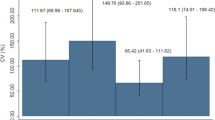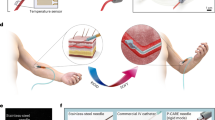Abstract
THE principle applied in the utilisation of rubber latex as an injection mass is the fact that the latex of the rubber tree—Hevea brasiliensis—coagulates to form rubber in the presence of dilute organic acids such as acetic or formic. After tapping the rubber tree, the collected latex may be preserved in a fluid condition by the addition of ammonia, and I believe it is exported from Ceylon preserved in this way. The latex which I used in my first injections was obtained more than three years ago, when ammonia to the extent of 5 per cent, was added to it, and although, standing so long, it had become creamy at the surface, it regained its normal fluidity on shaking. Latex is of the consistency of milk, so no difficulty arises in its introduction into blood-vessels or its penetration into the finer capillaries.
This is a preview of subscription content, access via your institution
Access options
Subscribe to this journal
Receive 51 print issues and online access
$199.00 per year
only $3.90 per issue
Buy this article
- Purchase on Springer Link
- Instant access to full article PDF
Prices may be subject to local taxes which are calculated during checkout
Similar content being viewed by others
Author information
Authors and Affiliations
Rights and permissions
About this article
Cite this article
BURT, D. A New Injection Mass—Rubber Latex. Nature 121, 497–498 (1928). https://doi.org/10.1038/121497a0
Issue Date:
DOI: https://doi.org/10.1038/121497a0
Comments
By submitting a comment you agree to abide by our Terms and Community Guidelines. If you find something abusive or that does not comply with our terms or guidelines please flag it as inappropriate.



